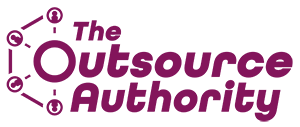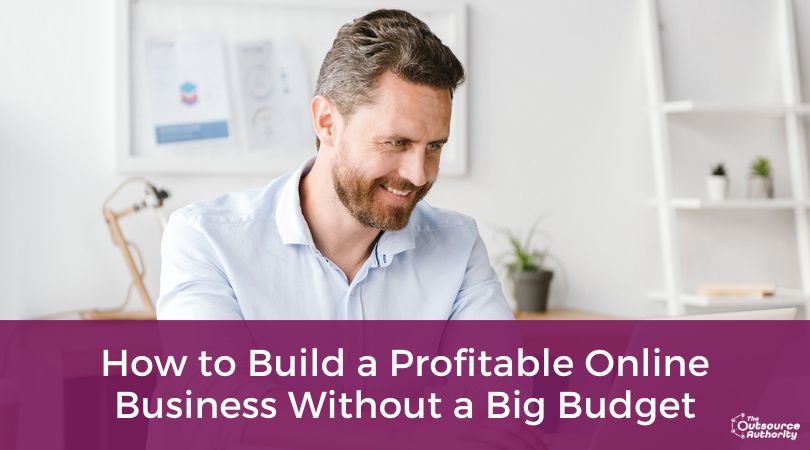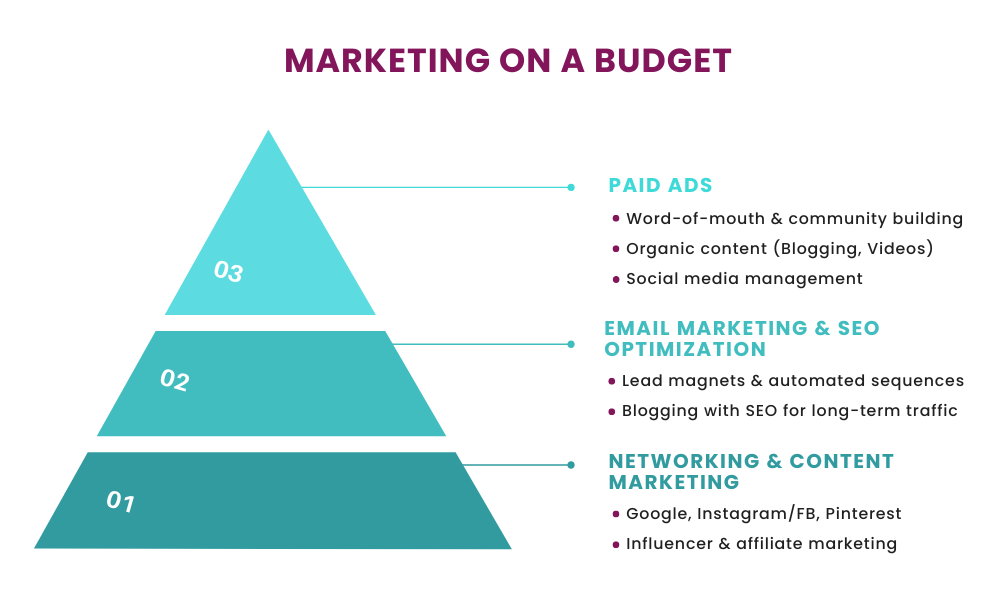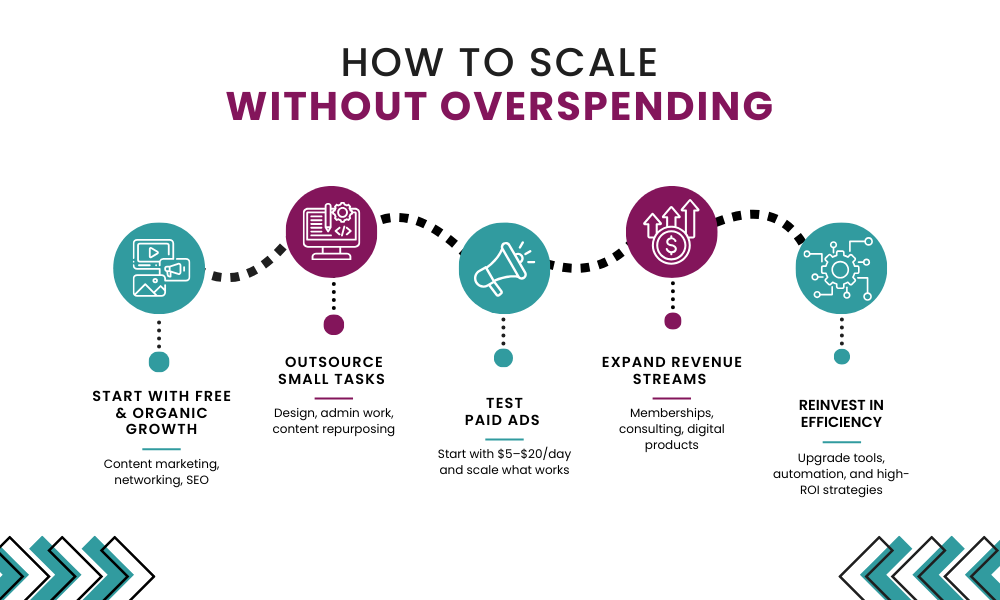Starting an online business sounds great. You get to be your own boss, work from anywhere, and create something that makes money on your terms. But there’s a common misconception that holds a lot of people back—thinking you need a ton of money to get started.
You don’t need a fancy website, expensive ads, or employees to build something profitable. Many successful businesses start with low-cost tools and free marketing strategies. The key is choosing the right business model, keeping expenses low, and focusing on what actually generates revenue.
This guide breaks down how to launch a profitable online business without overspending, from picking a business model that fits your skills to using affordable marketing tools and systems that save time.
Choosing the Right Business Model
Not all online businesses require a big upfront investment. The key is choosing a model that fits your skills, interests, and goals while keeping expenses low. Some business types require little to no startup costs, making them ideal if you’re working with a tight budget.
Here are some of the best low-cost, scalable online business models and who they’re a good fit for:
💬👥 Freelancing or Consulting
Best for: People who have a skill they can sell as a service, such as writing, design, marketing, or web development.
What you’ll do: Offer your expertise to clients on a project or ongoing basis.
Why it works: No inventory, no overhead, just you and your knowledge.
Example: If you’re great at social media, you can offer content creation services. If you have experience in HR, you can offer resume writing or interview coaching.
💻📖 Digital Products
Best for: Creators, educators, or service providers who want to package their knowledge into a product that can be sold repeatedly.
What you’ll do: Sell ebooks, courses, templates, or printables.
Why it works: Once created, digital products can generate passive income with little ongoing effort.
Example: A graphic designer can sell Canva templates, or a fitness coach can create an online workout guide.
🧑🤝🧑💰 Affiliate Marketing
Best for: Bloggers, content creators, or social media influencers who like recommending products and earning commissions.
What you’ll do: Promote other people’s products and earn a percentage of sales.
Why it works: No product creation, no inventory, just marketing.
Example: If you run a blog about productivity, you can promote software tools like Notion or Trello and earn commissions when people sign up.
📦🛒 Dropshipping & Print-on-Demand
Best for: Entrepreneurs who want to sell physical products without managing inventory.
What you’ll do: Create an online store where suppliers handle fulfillment.
Why it works: No upfront inventory costs—only pay for products when customers order.
Example: If you love designing graphics, you can create a print-on-demand store selling t-shirts, mugs, or phone cases with your designs.
👥🔄 Memberships & Subscriptions
Best for: People who want to build a community or offer exclusive content.
What you’ll do: Create a paid membership group, subscription box, or ongoing coaching program.
Why it works: Recurring revenue means predictable income.
Example: A business coach could offer a private mastermind group with monthly calls and exclusive resources.
Here’s a comparison chart to discover what’s the best fit for you:
| Business Model | Best For | Pros & Cons |
|---|---|---|
| Freelancing & Consulting | People with marketable skills (writing, design, marketing, etc.) | ✅ Quick to start, low-cost setup ❌ Requires ongoing client work |
| Digital Products | Creators, educators, and service providers | ✅ Passive income potential ❌ Takes time to create & market |
| Affiliate Marketing | Bloggers, content creators, social media influencers | ✅ No product creation, low effort ❌ Requires consistent traffic |
| Dropshipping & Print-on-Demand | Entrepreneurs who want to sell physical products without managing inventory | ✅ No upfront inventory costs ❌ Lower profit margins, competitive |
| Memberships & Subscriptions | People with exclusive content or a niche audience | ✅ Recurring revenue ❌ Requires ongoing engagement |
Setting Up Your Business
with Minimal Costs
A common mistake new entrepreneurs make is spending too much upfront on things that don’t directly generate revenue. A sleek website, a full brand style guide, and expensive software may seem essential, but in reality, they’re not what will make or break your success.
The truth? Many online businesses fail not because they lack a great idea but because they burn through their budget before making a single dollar. You don’t need a perfect setup—you need a profitable one.
The key is to start lean, invest in revenue-generating tools, and only upgrade when necessary. Many platforms allow you to scale as you grow, so there’s no need to commit to expensive software right away. In fact, you may never need to upgrade at all.
For example, I’ve been using the free version of Asana for years, and it works just fine. Sure, there are times when an extra feature would be nice, but does it justify an extra monthly expense? Not really. The same applies to many business tools—often, the free or low-cost version is more than enough to run a successful business.
Here’s how to set up your online business on a budget without sacrificing quality.
1. Skip the Expensive Website—Start Lean
You don’t need a fancy, custom-built website, you just need a functional, professional-looking site that gives potential customers the information they need.
Cost Breakdown:
- Domain & Hosting: Around $200/year from providers like GoDaddy, Namecheap, HostGator, or Bluehost.
- Affordable Website Builders:
- WordPress.com, Wix, Systeme.io – These range from $10–$30/month.
- Groove, Kartra, or Kajabi – All-in-one platforms that include websites, landing pages, and email marketing in one subscription.
💡 Tip: If you’re not selling physical products, you might not need a full website at all. A simple landing page with your offer, pricing, and contact info can be enough to start. Platforms like Carrd or Systeme.io allow you to launch a page for free or under $15/year.
2. Branding on a Budget
Your branding should look professional, but that doesn’t mean you need to spend thousands of dollars. Many entrepreneurs DIY their branding or outsource small design tasks affordably.
- Free & Low-Cost Branding Tools:
- Canva (Free or $13/month for Pro) – Create logos, social media graphics, and brand materials.
- AI Logo Generators: Looka, Hatchful, and LogoMakr provide free logo creation options.
- Affordable Logo Design: Fiverr has logo design services starting at $20.
👉 Example: Many top brands started with a simple text-based logo before investing in professional design. The goal isn’t perfection, it’s to look polished enough to build credibility.
| Business Model | Best For | Pros & Cons |
|---|---|---|
| Freelancing & Consulting | People with marketable skills (writing, design, marketing, etc.) | ✅ Quick to start, low-cost setup ❌ Requires ongoing client work |
| Digital Products | Creators, educators, and service providers | ✅ Passive income potential ❌ Takes time to create & market |
| Affiliate Marketing | Bloggers, content creators, social media influencers | ✅ No product creation, low effort ❌ Requires consistent traffic |
| Dropshipping & Print-on-Demand | Entrepreneurs who want to sell physical products without managing inventory | ✅ No upfront inventory costs ❌ Lower profit margins, competitive |
| Memberships & Subscriptions | People with exclusive content or a niche audience | ✅ Recurring revenue ❌ Requires ongoing engagement |
3. Choosing the Right Business Structure
You don’t need to rush into forming an LLC unless your business model requires it. In many cases, you can start as a sole proprietor and register an LLC later.
When an LLC Makes Sense:
- If you’re selling physical or digital products and want legal protection.
- If you want tax advantages (depending on your state).
- If you’re working with clients who require a business entity for contracts.
Where to Register an LLC:
- LegalZoom, ZenBusiness, Incfile – Offer fast, easy registration.
- Fiverr Business Formation Advisors – Get personalized guidance.
4. Setting Up Payment Processing
Before you launch, you need a way to get paid. Luckily, most online payment processors have no upfront costs, they simply take a small percentage per transaction.
- PayPal – No setup fees, but transaction fees are 2.9% + $0.30 per sale.
- Stripe – A great option for accepting credit card payments.
- Wise – Best for international transactions.
- Gumroad, ThriveCart, or Sellfy – If you’re selling digital products, these platforms handle payments and file delivery.
💡 Pro Tip: Many business tools can double as payment processors. For example, QuickBooks Online not only tracks finances but also sends invoices, eliminating the need for separate billing software.
5. Multi-Use Tools to Save Money
Instead of paying for multiple single-use tools, look for platforms that bundle multiple business needs into one subscription.
👉 Examples:
- Groove – Combines landing pages, email marketing, memberships, and eCommerce.
- QuickBooks Online – Handles both accounting and invoicing.
- Shopify – Includes an online store, payment processing, and inventory management.
By using all-in-one tools, you eliminate the need for multiple subscriptions, saving hundreds per year.
Marketing Without a Big Budget
As a new business owner, you might think you need paid ads to get noticed, but that’s not true. Organic marketing strategies like SEO, content marketing, networking, and social media can get people to your website without requiring a big budget. The trade-off? They take time and effort.
If you’re strategic and consistent, you can attract leads and sales with little to no marketing dollars. Let’s break down how to market your online business for free (or close to it).
1. SEO & Blogging: Understanding the Long Game
Search Engine Optimization (SEO) is one of the best ways to get long-term organic traffic, depending on your industry and keywords, but it’s not as simple as optimizing your site, writing a blog post and expecting to rank for high-traffic keywords.
What You Need to Know Before Investing in SEO:
- Ranking takes time. It can take months or even a year to rank on Google, depending on your niche.
- Competitive keywords are nearly impossible for new sites. If you’re targeting high-volume terms like “best marketing strategies,” you’re competing with massive sites that have been around for years.
- You need a focused content strategy. Writing random blog posts won’t work. You need a keyword strategy that targets low-competition, long-tail keywords (e.g., “best marketing strategies for handmade jewelry”).
How to Make SEO Work on a Budget:
- Free SEO tools: There are a variety of keyword research tools that are free of offer free trials.
- Start with niche keywords that are easier to rank for.
- Use blogging as a traffic-building tool, not your only marketing method.
Is SEO Worth It? Absolutely, but only if you’re in it for the long haul. If you need faster results, focus on social media, networking, and direct outreach first.
2. Social Media: Free Traffic, If Done Right
Social media is one of the most accessible marketing channels, but it requires consistent effort to see results. Choose 1-2 platforms where your audience spends time and focus there.
Best Social Platforms Based on Business Type:
- Instagram & TikTok: Best for eCommerce, personal brands, creatives.
- LinkedIn: Great for B2B, consultants, coaches.
- YouTube & Pinterest: Long-term traffic drivers for educational content, blogging, and digital products.
Pro Tip: Don’t try to be everywhere at once. Instead, go deep on one or two platforms and post consistently for real growth.
3. Networking & Collaboration: The Most Overlooked Growth Strategy
Many online business owners overlook networking because they assume it’s only for in-person businesses. But that’s a mistake. Whether you’re local or global, networking can open massive growth opportunities.
How to Leverage Networking for Free Marketing:
- Podcast Guesting: Get in front of new audiences without needing your own podcast.
- Strategic Partnerships: Collaborate with businesses that serve the same audience. (Example: A web designer teaming up with a copywriter.)
- Online Communities & Groups: Join Facebook Groups, LinkedIn groups, or online forums where potential clients hang out.
Even if you’re running a 100% online business, local networking can still work. Many small businesses prefer working with someone nearby who they know and have a connection with. Plus, they may not even have thought about your product or service after you’ve met them
4. Email Marketing: Your Biggest Asset
Building an email list is one of the smartest investments you can make. Social media algorithms change, but your email list is yours forever.
How to Start Email Marketing for Free:
- Choose a free email platform: Mailchimp, Aweber, or ConvertKit all have free plans.
- Create a simple lead magnet: A free guide, checklist, or mini-course in exchange for an email address.
- Use automation wisely: Even free plans allow basic automation sequences.
Many businesses ignore email marketing because they assume they need thousands of subscribers for it to be effective. But even a small, engaged list can be more valuable than thousands of random social media followers.
5. Why You Don’t Need Paid Ads at the Start
Paid ads can be tempting, but they can burn through your budget quickly if you don’t know what you’re doing. Many new entrepreneurs waste hundreds or thousands of dollars without seeing results.
Why Organic Marketing Works Better for Beginners:
- You learn what messaging resonates before spending money.
- You test your offers organically before scaling.
- You build an audience that doesn’t disappear when the ads stop.
Paid ads can be powerful, but only after you’ve validated your business. Until then, focus on organic strategies that don’t drain your budget.
Additional Marketplaces & Platforms
to Start Selling Online
Having a website is valuable, but it shouldn’t be your only sales channel. Marketplaces and listing platforms help you reach potential customers faster by tapping into built-in traffic without needing a large marketing budget.
Whether you’re offering freelance services, digital products, or physical goods, these platforms provide low-cost ways to start selling and gaining visibility. Instead of waiting for people to find your website, listing your services or products on multiple platforms increases your chances of making sales faster.
Freelancing & Consulting Services
If you’re offering services, coaching, or consulting, listing on a service marketplace or directory puts your expertise in front of businesses and individuals actively looking for help.
Best Platforms for Different Business Types
| Business Type | Recommended Platforms | Why Use It? |
|---|---|---|
| Freelancing & Consulting | Fiverr, Upwork, Breef, Clarity.fm | Reach clients without needing a website |
| Digital Products | Gumroad, Etsy (printables), Payhip | Sell digital downloads without upfront costs |
| Physical Products (No Inventory) | Printful, Printify, Faire | Dropshipping and wholesale platforms |
👉 Example: A career coach could list a resume review service on Fiverr, offer hourly consulting on Clarity.fm, and promote a local workshop through Meetup.
💡 Tip: Choose a platform based on where your ideal clients are most likely to search for help.
Selling Digital Products
If you want to sell ebooks, courses, templates, or other digital downloads, these platforms handle payments, delivery, and customer access for you.
- Gumroad – A beginner-friendly platform for selling ebooks, courses, memberships, and templates.
- Payhip – Similar to Gumroad, but with additional features for subscriptions and pay-what-you-want pricing.
- Etsy – Not just for handmade goods; Etsy is also great for selling printables, planners, and digital templates.
- Ko-Fi & Buy Me a Coffee – Monetize exclusive content, coaching sessions, or mini-products.
- AppSumo Marketplace – If you’ve developed a digital tool or course, AppSumo can help you sell lifetime deals to early adopters.
👉Example: A graphic designer could sell custom logo templates on Etsy, list Canva templates on Gumroad, and offer social media design courses on Payhip.
💡 Tip: Some platforms, like Gumroad and Ko-Fi, allow you to sell directly from social media or an email list without a full website.
Selling Physical Products Without Inventory
Want to sell physical goods without warehousing or shipping? These platforms let you run an online store without stocking inventory.
- Printful & Printify – Print-on-demand services that allow you to sell custom t-shirts, mugs, and posters without holding inventory.
- Tundra & Faire – Wholesale platforms that connect product makers with retailers.
- Facebook Marketplace & Nextdoor – Great for local selling with zero listing fees.
- Google Merchant Center – Lets you list products so they appear in Google Shopping results.
👉Example: A fitness brand could sell branded t-shirts through Printful, list wholesale workout gear on Faire, and promote special offers on Facebook Marketplace.
💡 Tip: If you’re using print-on-demand, test designs in a niche market first before expanding into more product options.
Many entrepreneurs limit themselves to one platform, but listing across multiple marketplaces can dramatically increase your sales potential. Instead of waiting for people to find your website, placing your offer where people are already searching for what you sell puts you in front of ready-to-buy customers.
The key is to be strategic:
- Start with 2–3 platforms instead of trying to be everywhere at once.
- Optimize your listings with strong descriptions, relevant keywords, and quality visuals.
- Test pricing and positioning to see where your audience responds best.
Automating & Outsourcing to Save Time
When starting a business, time is one of your most valuable resources. The more you try to handle everything yourself, the harder it becomes to focus on growth. That’s where automation and outsourcing come in.
You don’t need a massive budget to start delegating tasks or automating repetitive work. Many tools offer free or low-cost options that help you streamline operations while staying within budget. The key is knowing what to automate and when to outsource, so you’re focusing on tasks that drive revenue instead of getting caught up in unnecessary busy work.
What to Automate First
Before outsourcing, look for tasks you can automate to save time without hiring help. But keep in mind that automation isn’t always the cheaper option. If software costs more than you’d pay a freelancer for the same work, outsourcing may be the better choice.
For example:
- SEO tools like Ahrefs or SEMrush cost $99–$200/month, but if you only need occasional keyword research, you might be better off hiring a freelancer for $20–$50 per project instead of paying a monthly fee.
- Social media scheduling tools like Buffer or Later might cost $15–$30/month, but if you prefer to hand off posting completely, a freelancer can handle it for $50+ per batch of content.
💡 Tip: If a tool saves you time but not money, consider whether that time is better spent on tasks that actually grow your business.
Budget-Friendly Outsourcing
Not everything can be automated, and at some point, outsourcing becomes necessary to scale. The good news is you don’t need to hire a full-time team—there are affordable ways to get help without a major commitment.
- Hiring freelancers for small tasks – Platforms like Fiverr and Upwork allow you to hire experts for one-time projects or ongoing tasks, such as graphic design, website fixes, or video editing.
- Paying for project-based help instead of full-time employees – Instead of hiring staff, you can contract specialists only when needed, keeping costs low.
- Virtual assistants – If you need admin support, platforms like OnlineJobs.ph or Belay connect you with part-time VAs at different price points.
It’s tempting to DIY everything when starting out but outsourcing even a few time-consuming tasks can help you grow faster.
When to Automate vs. Outsource
A combination of automation and strategic outsourcing helps you run your business more efficiently while keeping costs manageable. But how do you decide whether to automate or outsource a task?
- If it’s repetitive and follows a clear process, automate it. Example: Scheduling social media posts, sending welcome emails, or tracking invoices.
- If it requires creativity or decision-making, outsource it. Example: Writing website copy, designing a logo, or editing a promotional video.
| Task | Automate? | Outsource? |
|---|---|---|
| Social Media Posting | ✅ Yes (Buffer, Later) | ❌ No (unless managing multiple accounts) |
| Email Sequences | ✅ Yes (MailerLite, ConvertKit) | ❌ No (once set up, it runs on its own) |
| SEO & Keyword Research | ❌ No | ✅ Yes (if infrequent, hiring a freelancer makes more sense) |
| Graphic Design | ❌ No | ✅ Yes (better to hire than use AI for brand consistency) |
Some tools even combine automation and outsourcing. For example, instead of hiring a customer service rep immediately, you could set up an AI chatbot to answer FAQs while outsourcing more complex customer inquiries.
Cost Range: $20–$200/month
- Basic automation tools (social media scheduling, email automation): $0–$50/month
- Hiring freelancers for occasional tasks (graphics, writing, admin work): $50–$200/month
- Virtual assistant support for a few hours a week: $150–$500/month (optional as you scale)
Scaling Your Business for
Long-Term Profitability
Once your business is bringing in steady income, it’s time to think about scaling, but that doesn’t mean blindly spending more money. Growth should be intentional, with every decision helping you either increase revenue, improve efficiency, or free up time.
Scaling doesn’t have to be complicated, but it does require strategic reinvestment and a plan for long-term sustainability.
Reinvesting for Growth
Scaling successfully means knowing when to spend and when to hold off. Just because you can afford something doesn’t mean it’s the right move.
- When to Start Paid Ads
- If you’re already making consistent sales or bookings and want to expand.
- If you’ve built an organic audience and ads can help amplify what’s already working.
- If you have a proven offer and a system in place to convert traffic into customers.
Instead of jumping in with a big budget, start small and test. Running a $5–$20/day campaign lets you figure out what works before spending more.
- Choosing the Right Ads for Your Business
- Google & YouTube Ads – Good for high-intent buyers searching for specific solutions.
- Facebook & Instagram Ads – Work well for brand awareness, retargeting, and offers that don’t require a long decision-making process.
- Pinterest Ads – Great for evergreen products, digital downloads, and blog traffic.
Paid ads aren’t necessary for every business. If you’re seeing consistent organic growth, you might not need them yet—or ever.
- Upgrading Tools for Efficiency
- If a free tool limits your ability to work effectively, an upgrade could be worth it.
- If you’re outsourcing a task regularly, investing in software might save money in the long run.
- If you’re spending too much time on admin work, automating some of it can free you up to focus on growth.
Expanding Your Revenue Streams
A big part of scaling is diversifying income. If all of your revenue comes from one source, you’re vulnerable if demand shifts.
Ways to expand your income without adding more work:
- Memberships & subscriptions – Offer ongoing value through exclusive content, training, or a community.
- Coaching or consulting – If you already teach or advise others, you can turn that into a paid offer.
- Digital product bundles – Package multiple products together to increase perceived value and boost sales.
If you’re a freelancer, think about adding a productized service or a digital product so you’re not only making money when you’re actively working. If you’re selling physical products, look at ways to add wholesale or bulk order options to increase revenue without constantly chasing new customers.
Scaling Without Losing Profitability
One of the biggest mistakes business owners make when scaling is increasing expenses too quickly. More revenue doesn’t mean much if expenses rise at the same rate.
- Before upgrading, ask: Will this actually make my business more profitable?
- Track profitability as you scale. Revenue means nothing if your margins shrink.
Scaling should feel like a natural next step, not a financial burden. Some businesses reinvest $100–$500/month in things like ads, upgraded software, or outsourcing, but only if it supports growth.
Recap & Next Steps
Building a profitable online business doesn’t require a big budget, but it does require a clear plan and a focus on the right things at the right time. Many new entrepreneurs waste money on things that don’t generate revenue early on, like an expensive website, software they don’t need, or unnecessary upgrades. Instead, the key is to start lean, leverage free or low-cost tools, and reinvest strategically.
Here’s a quick recap of what we covered:
- Choose a business model that fits your skills and budget – Freelancing, digital products, affiliate marketing, dropshipping, and memberships all offer low-cost entry points to online business.
- Set up your business with essential tools only – Start with a simple website, basic branding, and a way to collect payments.
- Use free and organic marketing strategies first – SEO, content marketing, networking, and social media can drive traffic without needing paid ads.
- Sell on platforms with built-in audiences – Whether it’s Fiverr for services, Etsy for digital products, or Printful for print-on-demand, using existing marketplaces can help you start making sales faster.
- Automate and outsource strategically – Focus on repetitive tasks first, and when it makes sense, delegate small projects to free up your time for growth.
- Scale wisely – When revenue is steady, reinvest in paid ads, better tools, and additional revenue streams without overspending.
The most important thing? Take action. The best business plan means nothing if you don’t get started.
What to Do Next
- Pick a business model that aligns with your skills and goals.
- Set up only the essential tools—don’t overcomplicate it.
- Start marketing with free or low-cost strategies before considering paid ads.
A successful online business is built on smart decisions, consistency, and continuous learning. Start small, grow intentionally, and focus on profitability from day one.
Ready to launch and scale your online business without wasting time and money? Download the Outsource with Confidence Guide to learn how to grow efficiently and find the right help without breaking the bank.










